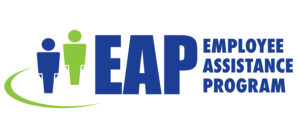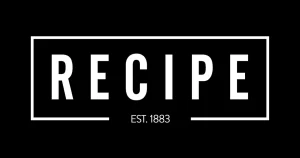

Get the most out of your EAP!
An EAP is an employer-sponsored program designed to help employees with personal problems
that could affect their job performance.
We all face challenges during our lives. Sometimes we could use a little help to deal with those challenges, but it can be tough to know where to turn.
That’s where an often-overlooked employee benefit can be incredibly helpful. It’s called an employee assistance program (EAP). Many employers offer EAPs, but employees may not be aware of the programs’ resources.
What exactly is an EAP?
An EAP is an employer-sponsored program designed to help employees with personal problems that could affect their job performance. EAP resources are almost always free to employees, as well as to their partners and children.
What EAPs offer:
EAPs give employees access to a wealth of resources, including individual and family counseling. Some programs also include access to nurse advice lines, financial and legal advice, and more. These resources can help with a variety of challenges, such as:
• Alcohol or substance abuse
• Childcare and elder care
• Family and relationship problems
• Stress, anxiety, and other mental health issues
• Trauma
• Domestic violence
• Adoption red tape
Check with your Employer:
Ask your employer’s human resources department if the organization offers an EAP. If they do, look into the resources that are available through the program. You may be surprised at how much they can help you.
Guide to Mental Health Professionals
If you’re new to mental health care, choosing a provider can be a little confusing. It’s important to understand the expertise and services available from different mental health care providers so you can get the care that’s right for you. This guide will help.
Psychiatrists: Psychiatrists are medical doctors (MDs or DOs) who completed four years of medical school, a one-year internship, and at least three years of psychiatric residency. They focus on the medical aspects of mental illness and can prescribe medication and other treatments.
Psychologists: Psychologists have doctoral degrees (PhDs, PsyDs, or EdDs) in psychology—the study of the mind and behaviors. A doctoral degree in psychology requires at least four to six years of education after completing an undergraduate degree. A one-year internship is also required. Psychologists can provide counseling and psychotherapy and conduct psychological testing. They can’t, however, prescribe medication.
Licensed Mental Health Counselors (LMHCs): These professionals have master’s degrees in psychology,
counseling, or similar areas. Licensed mental health counselors can evaluate and treat mental health issues with psychotherapy or counseling.
Licensed Marriage and Family Therapists (LMFT): People with this license have at least a master’s degree in the field and may have also completed an internship. They evaluate and treat individuals, couples, and family members with a family-centered approach.
Clinical Social Workers: Clinical social workers have a master’s degree in social work. They also have special training in evaluating and treating mental illnesses. In addition to providing psychotherapy,
social workers can provide case management and hospital discharge planning.
Psychiatric or Mental Health Nurses: These nurses have special training in mental health care. Those
with the proper certification can evaluate patients for mental illness and provide psychotherapy. In some states, they’re also licensed to prescribe and monitor medications.
You may need more than one provider. In some cases, a combination of different kinds of mental health care—such as medication and therapy—may produce the best results. That’s why many people see more than one kind of mental health care provider.
Supporting Someone Who’s Struggling.
It’s hard to see someone else go through a tough time. It makes you wish you had a magic wand so you could just make the problem go away entirely.
Fortunately, there are several ways to offer support to someone who’s suffering—and you don’t need a magic wand. You just need empathy, kindness, and respect.
Be an active listener.
Listening isn’t just waiting for the other person to stop talking so you can start. True listening requires working to understand the other person. You can do this by:
• Focusing on them and avoiding distractions (like your
phone)
• Asking respectful questions if you’re confused by
something they say
• Summarizing what they tell you to make sure you
understand
Validate their feelings.
Sometimes just being able to vent about a problem is all someone needs. In that situation, just saying something that acknowledges their feelings—without minimizing the issue—can help. Here’s an example: “I’m so sorry you’re dealing with this. It sounds like a really tough situation.”
Do something thoughtful.
Actions (almost always) speak louder than words. If you know someone who’s suffering, a small act of kindness can show that you care. Here are a few ideas:
• Bring a meal
• Give flowers
• Send a card
• Offer to run an errand
Don’t be a “fixer”.
As tempting as the idea of a magic wand may be, most people don’t want you to “fix” their problem. They really just want to know that you care.
Sometimes just being able to vent about a problem is all someone needs.

INSTANT BERRY BANANA SLUSH

Prep Time: 5 minutes
Cook Time: 0 minutes
Servings: 2
Ingredients:
• 2 ripe bananas
• 200 grams frozen berry mix (blackberries, raspberries and currants)
Instructions:
1. Slice the bananas into a bowl and add the frozen berry mix. Blitz with a stick blender to make a slushy ice and serve straight away in two glasses with spoons.
